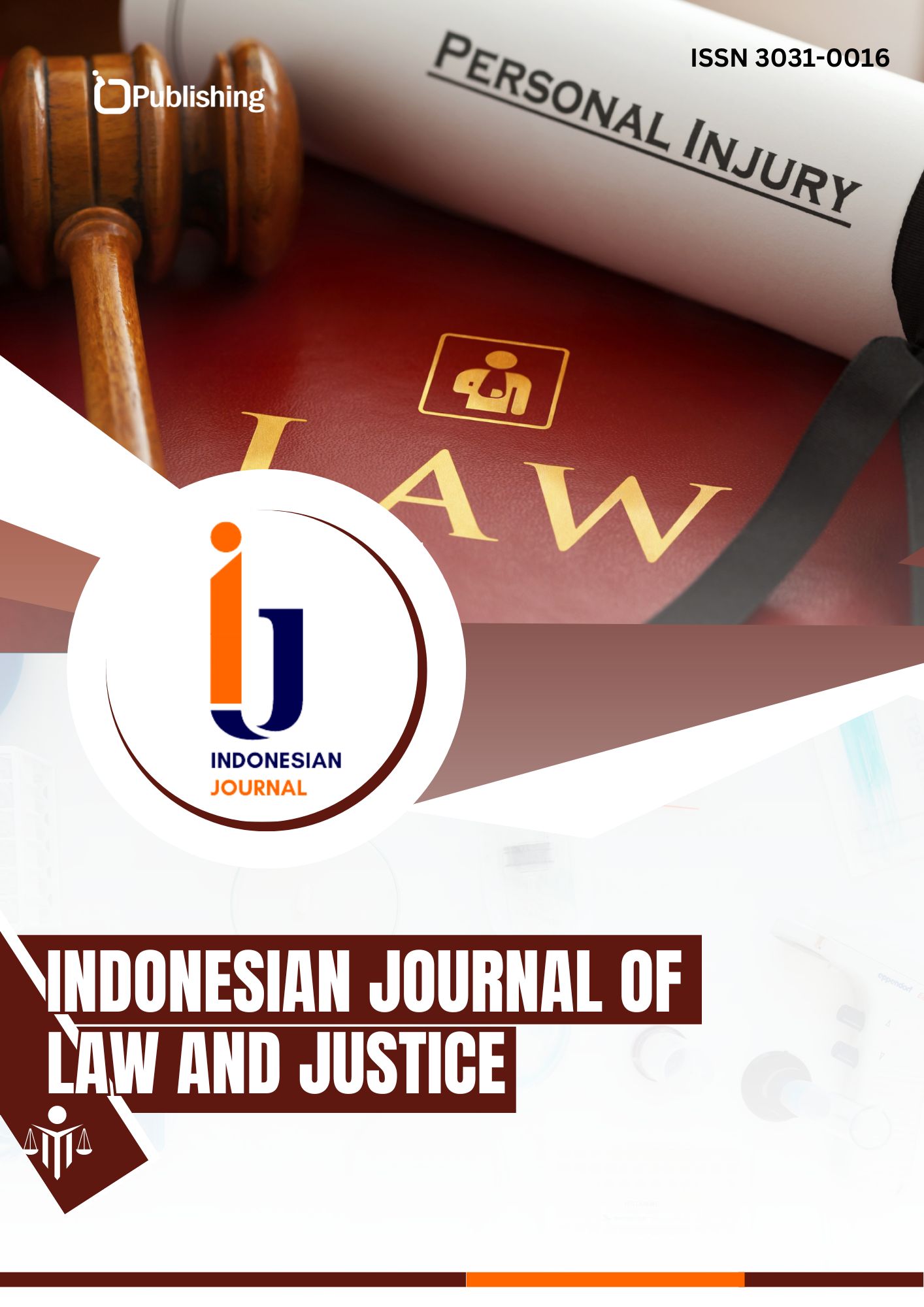The Role of Correctional Institutions In Empowering Prisoners For The Character of Prisoners
DOI:
https://doi.org/10.47134/ijlj.v2i2.3449Keywords:
Role, Coaching, PrisonersAbstract
The purpose of this study is to explore the role of correctional institutions in shaping the character of prisoners. The concept of inmate development in correctional institutions is analyzed and a normative juridical approach is used to review and analyze laws and regulations related to the concept of inmate development in shaping their character. The results showed that there are still various obstacles to the successful implementation of an activity, the large number of prisoners makes the correctional institution over capacity where the capacity as of December 2023 should only be 1,200 people but there are 1,280 people in it so that there is an overcapacity of 6% things like this are the obstacles most often encountered against the success of empowerment in correctional institutions, besides that several obstacles are encountered to maximize coaching. The lack of budget in the process of fostering Wargabinaan often hinders the implementation of the coaching program, which causes prison officers to prepare funding efforts that can help the implementation by forming cooperatives among fellow prison officers, however, even that has not been able to meet the financing to the maximum so that the purpose of coaching is not maximally achieved. In an effort to empower prisoners, prison officers maximize prison officers in fostering prison officers with the aim that after the prisoner comes out / finishes serving his sentence, he can re-interact with the community.
References
A, A. O., Putri, A. I., Matthew, K., & Universitas, H. (2023). 23-Moderasi-0101-464 (1). 2023, 1–17. https://doi.org/10.11111/nusantara.xxxxxxx
Adikoeswanto, D. (2022). The mediation role of adoption readiness on perceived anxiety and attitude toward using database management system at correctional institutions. Heliyon, 8(8). https://doi.org/10.1016/j.heliyon.2022.e10027
Adikoeswanto, D. (2024). Fostering voice behavior in correctional institutions: Investigating the role of organizational support and proactive personality. PLoS ONE, 19(5). https://doi.org/10.1371/journal.pone.0303768
Aji, R. P. (2016). Peran Lembaga Pemasyarakatan Terbuka Kelas Ii B Jakarta Dalam Proses Reintegrasi Sosial Warga Binaan Pemasyarakatan (Wbp)(Perspektif Pekerja Sosial Koreksional). Repository.Uinjkt.Ac.Id.
Andrade, B. (2024). The Personality of Visual Elements: A Framework for the Development of Visual Identity Based on Brand Personality Dimensions. International Journal of Visual Design, 18(1), 67–98. https://doi.org/10.18848/2325-1581/CGP/v18i01/67-98
Anjani, R. M., & Wibowo, P. (2023). Mengatasi Lingkaran Residivisme: Pemberdayaan Narapidana Melalui Pembinaan Kemandirian Di Lembaga Pemasyarakatan. Triwikrama: Jurnal Ilmu Sosial, 01(05), 50–60.
Bartholomaeus, J. (2021). The empowering function of the belief in a just world for the self in mental health: A comparison of prisoners and non-prisoners. Personality and Individual Differences, 179. https://doi.org/10.1016/j.paid.2021.110900
Cerrato, S. (2024). Order or Stability: The Role of Penal Administrators in the Transformation of Instability within Correctional Institution. Deviant Behavior, 45(1), 26–49. https://doi.org/10.1080/01639625.2023.2237167
Jang, E. (2019). The relation between temperament and anger response among prisoners: comparison of Reinforcement Sensitivity Theory and the Psychobiological Model of temperament and character. Heliyon, 5(7). https://doi.org/10.1016/j.heliyon.2019.e02103
Kozlova, A. (2024). The influence of society and social groups on the development of personality. Multidisciplinary Reviews, 7. https://doi.org/10.31893/multirev.2024spe035
Loua, A. (2020). A review of policies and programmes for human organ and tissue donations and transplantations, WHO African region. Bulletin of the World Health Organization, 98(6), 420–425. https://doi.org/10.2471/BLT.19.236992
Mieda, T. (2024). Personality Development And Community Characteristics In Childhood And Adolescence. The Routledge International Handbook of Changes in Human Perceptions and Behaviors, 91–104. https://doi.org/10.4324/9781003316602-8
Moreira, P. A. S. (2022a). The personality of male prisoners: Moving towards an integrated temperament-and-character-based theory of criminal and antisocial behavior. Journal of Criminal Justice, 79. https://doi.org/10.1016/j.jcrimjus.2022.101897
Moreira, P. A. S. (2022b). The personality of male prisoners: Moving towards an integrated temperament-and-character-based theory of criminal and antisocial behavior. Journal of Criminal Justice, 79. https://doi.org/10.1016/j.jcrimjus.2022.101897
Nisa, A. N. A. (2023). Peran Lapas Dalam Membina Wargabinaan Sebagai Upaya Pencegahan Pengulangan Tindak Pidana. Mutiara : Jurnal Ilmiah Multidisiplin Indonesia, 1(1), 117–125. https://doi.org/10.61404/jimi.v1i1.22
Rinaldi, K. (2019). Biografi penulis.
Utoyo, M. (2015). Konsep Pembinaan Warga Binaan Pemasyarakatan Analysis Of Prisoners Guidance To Reduce Level. Pranata Hukum: Jurnal Ilmu Hukum, 10(1), 37–48.
Wulandari, S. (2015). Fungsi Sistem Pemasyarakatan Dalam Merehabilitasi Dan Mereintegrasi Sosial Warga Binaan Pemasyarakatan. Serat Acitya – Jurnal Ilmiah UNTAG Semarang, 4(Vol 4, No 2 (2015)), 87–94.
Zuiderwijk, A. (2020). What drives and inhibits researchers to share and use open research data? A systematic literature review to analyze factors influencing open research data adoption. PLoS ONE, 15(9). https://doi.org/10.1371/journal.pone.0239283
Downloads
Published
How to Cite
Issue
Section
License
Copyright (c) 2024 Falan Tesen Batubara, Herlina Manullang, July Esther

This work is licensed under a Creative Commons Attribution 4.0 International License.










